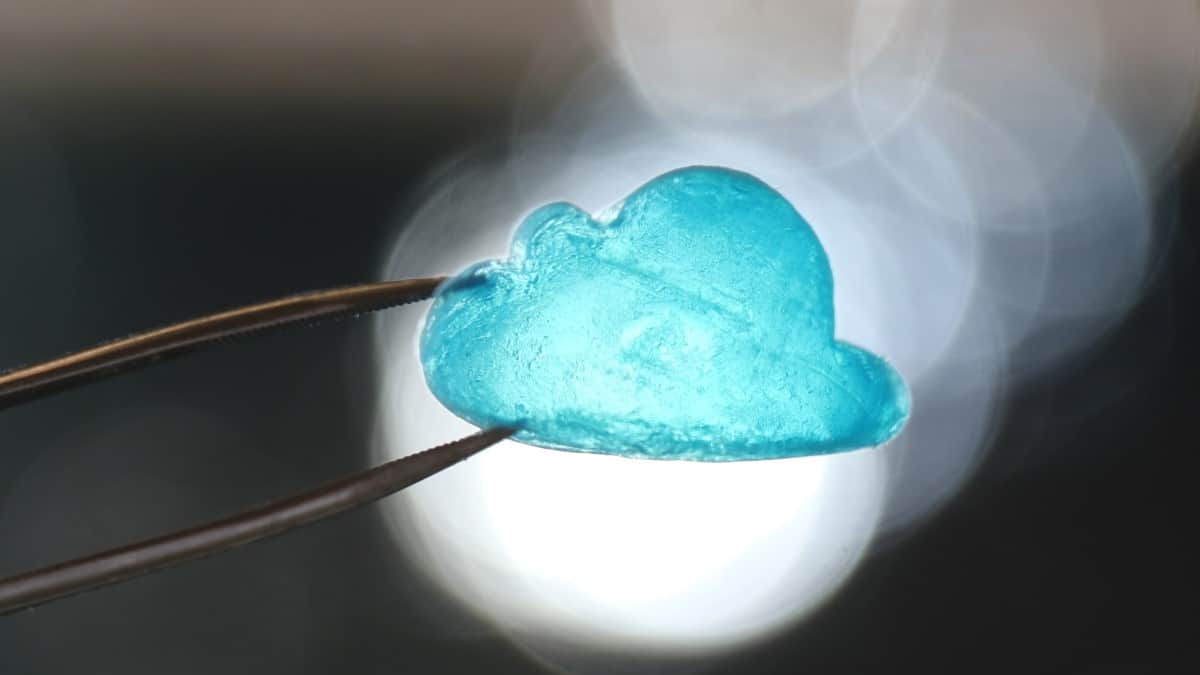
If you put two ice cubes side-by-side in a freezer you will find that after a while they will fuse together. This effect fascinated the great 19th century physicist Michael Faraday, who proposed that ice has a thin layer on water on its surface that causes the cubes to freeze together. Now, physicists at the University of Amsterdam have done experiments that suggest that the effect could occur because water molecules sublimate from the surface – that is transform directly from solid to gas, skipping the liquid phase altogether.
Instead of studying ice cubes, the team observed how tiny scratches on the surfaces of ice heal themselves within several hours. Then they used their data to evaluate four different models of how this process could occur – including Faraday’s surface liquid theory. They found that the sublimation of water from the scratches followed by its condensation back onto the surface provided the best explanation of what they saw.
Now, you might be thinking that ice rinks could somehow optimize this process so they could do away with Zamboni ice re-surfacing machines. Apparently not, because the experiments were done under controlled conditions that would be difficult to replicate on a rink – so Zambonis are safe for now. The research is described in the Journal of Physical Chemistry C.
Artificial intelligence goes gaming
Computers are already advanced enough to beat the best human players at games such as chess and poker. But now artificial intelligence (AI) has been taken to the next level by outcompeting four world-champion-level human players in the head-to-head car racing game Gran Turismo.
Researchers at Sony taught an AI “agent” named GT Sophy to play Gran Turismo using deep reinforcement learning. It was trained to accelerate and brake the car efficiently over a course, as well as find alternative paths in different conditions or when blocked by opponents. The system can also work out how to avoid penalties that would be incurred by breaching race etiquette. As well as giving humans a good beating, which it did over three car and track combinations, the findings could have applications in robotics, aerial drones and self-driving vehicles. The study is described in Nature.
Expensive air
Property prices in Switzerland are famously high, and now researchers there and in Ireland and Norway have show that it is economically advantageous to use high-cost, low-thickness “superinsulation” in buildings where real estate is very expensive. They looked at superinsulation made from aerogels, which are materials that are mostly air – and therefore very good and keeping the cold out (or in).
The team evaluated the use of an aerogel insulating material 14 cm thick that was used in a mixed residential and commercial building that was recently built in Zurich. The aerogel was used in place of a much cheaper conventional material that is 20 cm thick. This meant that an additional 30 square metres of floor space was created in the building. Floor space in Zurich costs 12,700 Swiss francs (£10,000) per square metre, so even when the extra cost of the aerogel is factored in, the aerogel turned a profit of 247,000 Swiss francs.
The research is described in Energy and Buildings.
